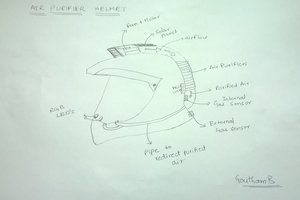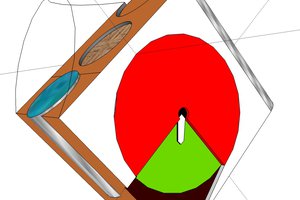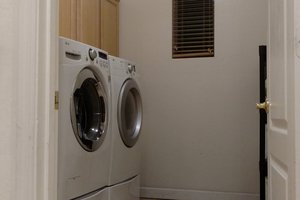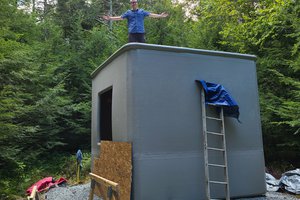General Details and Concepts:
The main concept behind the separator is to force filtered air through a nitrogen separation membrane, which is simply designed to separate atmospheric oxygen and argon from the nitrogen in the air. The rest of the project is consistent of gas compression, regulation, and filtering.
The nitrogen gas being generated in this project needs to be mostly pure along with being clean and dry because it will be used in a nitrogen liquefier. Any water of oil contaminating the gas can freeze in the liquefier and clog pipes. The retaliative purity of the gas being generated can be adapted for different types of projects.
To obtain dryer gas, add more Oil/Water separators and desiccant dryers. To obtain less pure gas, use a less accurate nitrogen separation membrane (in theory the only reason you would do this is to reduce cost).
The whole project is deigned to be built with parts costing less then 400 dollars, but that depends on the availability of certain higher priced items. For example, I already had a old compressor that I wasn't using, so I chose to use that instead of buying a new one. A further note on the compressor, one can choose to use their shop compressor rather then a dedicated one, just keep in mind the noise level. Due to the slow output rather, the separator can be left on anywhere from a few hours to more the several depending on the amount of nitrogen needed. With that rate, a shop compressor might be going off every 20 minutes or so. Another option is to use a refrigeration compressor instead but this requires more filters and an oil return line due to the lubricant usually being mixed with the refrigeration gas.
The project logs below will outline the building aspect of the project as it is built. Details for the design are directly below.
Design:
The flow of the working gas through the system is as follows:
- The gas enters the compressor through a air filter such as an automotive air intake filter. This removes any large particulate from contaminating the air source and helps extend the life of the compressor.
- The compressed gas is then stored in a tank. This not only creates an available reservoir for the system, but also cools the gas after compression to prevent it from melting any of the regulators or filters.
- The gas then reaches a ball valve that controls the input to the separation system. This allows the user to quickly turn off the gas supply without having to lower the regulator to zero.
- After the valve, the gas enters a pressure regulator to regulate the compressed gas to around 80 PSI.
- The now regulated gas enters two "wet side" filters: a particle separation filter, and a oil/water separator. These are labeled as "wet side" filters because at this stage the gas has yet to enter the next stage: the desiccant dryers.
- At this stage, the gas is dried in two cylinders containing a rechargeable desiccant such as molecular sieves or silica pellets. This removes a majority of the moisture from the gas.
- The gas then enters a single "dry side" filter: the coalescing filter. This removes the last of the oil and water that may have eluded the previous filtration devices.
- The gas now is regulated by a flow valve where the flow is lowered to a rate suitable for the nitrogen separation membrane.
- It now enters the nitrogen separation membrane where the oxygen and argon mixed in with the nitrogen is removed and expelled from the system.
- The pure nitrogen gas now reaches its last stop, the output valve. Connected to the other side of the output valve is the user's storage tank of choice.
 Leo Mahdessian
Leo Mahdessian


 Ross Bochnek
Ross Bochnek
 David Thomas
David Thomas
 Alex Bell
Alex Bell
So this isn't going to generate 5 9s purity N2. It looks like 95 to 99.5 N depending upon the Pressure supplied/ and generation rate you need. So you need to work backward to size the membrane based on your purity and volume before you size all the other components.